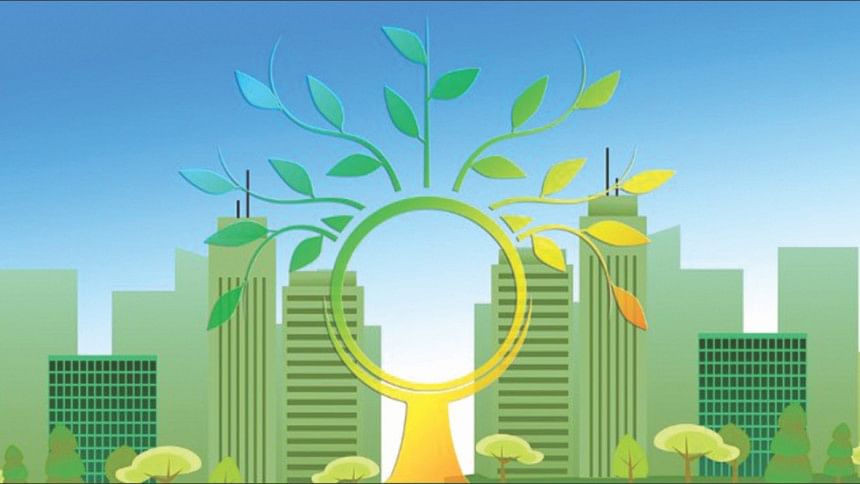Driving development through sustainable infrastructure

Bangladesh is experienc-xing an unprecedented growth in infrastructure. Big infrastructure projects are going on across the country, and the momentum is also animated in the rural areas. Against this background, the question of sustainability of infrastructures demands proper attention from the policymakers, and general people also need to be made aware of it. Prof. Dr. A.F.M. Saiful Amin, Department of Civil Engineering, Bangladesh University of Engineering and Technology (BUET), recently addressed this very issue, explaining the concept of sustainability in terms of life cycle cost of an infrastructure whilst highlighting the areas that need to be looked into for ensuring sustainable growth in the infrastructure sector.
Professor Amin elucidated the concept of life cycle cost of an infrastructure as an assessment of the total cost of the structure which includes initial investment and operational and maintenance cost throughout its lifetime. This long-term thinking needs to be matched by the financial capacity of the entrepreneur. It may increase the initial costs but result in dramatically reduced operating and maintenance costs in the longer term. At present Bangladesh is on her way to a well-off status and the country should seriously think about the longevity of its infrastructure projects, said the expert. He highlighted the hundred-year-old Hardinge Bridge, which still stands strong, as an example of long-term thinking for infrastructure projects and service to the people.
Dr. Amin also stressed the efficient use of inputs for reducing life cycle cost of a structure. The basic idea is that the natural state is the most stable state of an element. The more you add inputs the more it becomes unstable. For example, after putting inputs into clay we make bricks out of it, and if we the break the bricks into smallest pieces we get clay again. But it will not remain as good for use as before. So when we add an input to a structure we should think about its longevity so that we can make the best use of our limited resources. “At the end of the day, our concrete is still like clay and if we go on extracting raw materials at the current rate, we must not do so without considering the implications on the environment,” warned the expert.

His most important piece of advice was to efficiently manage waste and use as many recoverable materials as possible for a sustainable project. He informed that a road of considerable length could be built by using the waste materials of a four- or five-storied demolished building. In Bangladesh, construction wastes are basically generated in the urban areas. If we properly recycle these wastes to generate construction materials it will ease pressure on natural resources. Pointing to the government decision to built concrete road instead of bituminous, he suggested using recycled concrete materials for that purpose. As recycled materials retain a considerable amount of cementing property and other inputs they will reduce the cost of the projects, said the expert.
While talking about the future growth of the infrastructure industry, Dr. Amin indicated to the worldwide shift towards steel structure from concrete because steel is easily replaceable, efficient and recyclable. The rapidly changing economy of the country also demands this flexibility. Citing an example of a concrete building he said that if you want to build a ten-storied building on the existing foundation of a five-storied building you have to demolish it first and spend a good amount of money. The waste of the building will be of no use to the owner, rather s/he has to spend more money to clear the waste. If it were a steel structure, then it could have been easily sold and replaced to another place and the owners would also benefit from this overhaul. The construction industries are also aware of this shift. So it is now quite common for the cement industries to invest in steel industries. Still, the use of cement will persist because the floor and walls will be of concrete, said Dr. Amin.
In his closing remark, the expert emphasised creating mass awareness about building sustainable infrastructures. People need to be made aware that buying quality products at a marginally higher price may turn out as a good investment. Still, there will be a need for strong implementation of construction regulation to streamline the infrastructure sector and check unscrupulous activities, concluded Professor Saiful Amin.

 For all latest news, follow The Daily Star's Google News channel.
For all latest news, follow The Daily Star's Google News channel. 



Comments